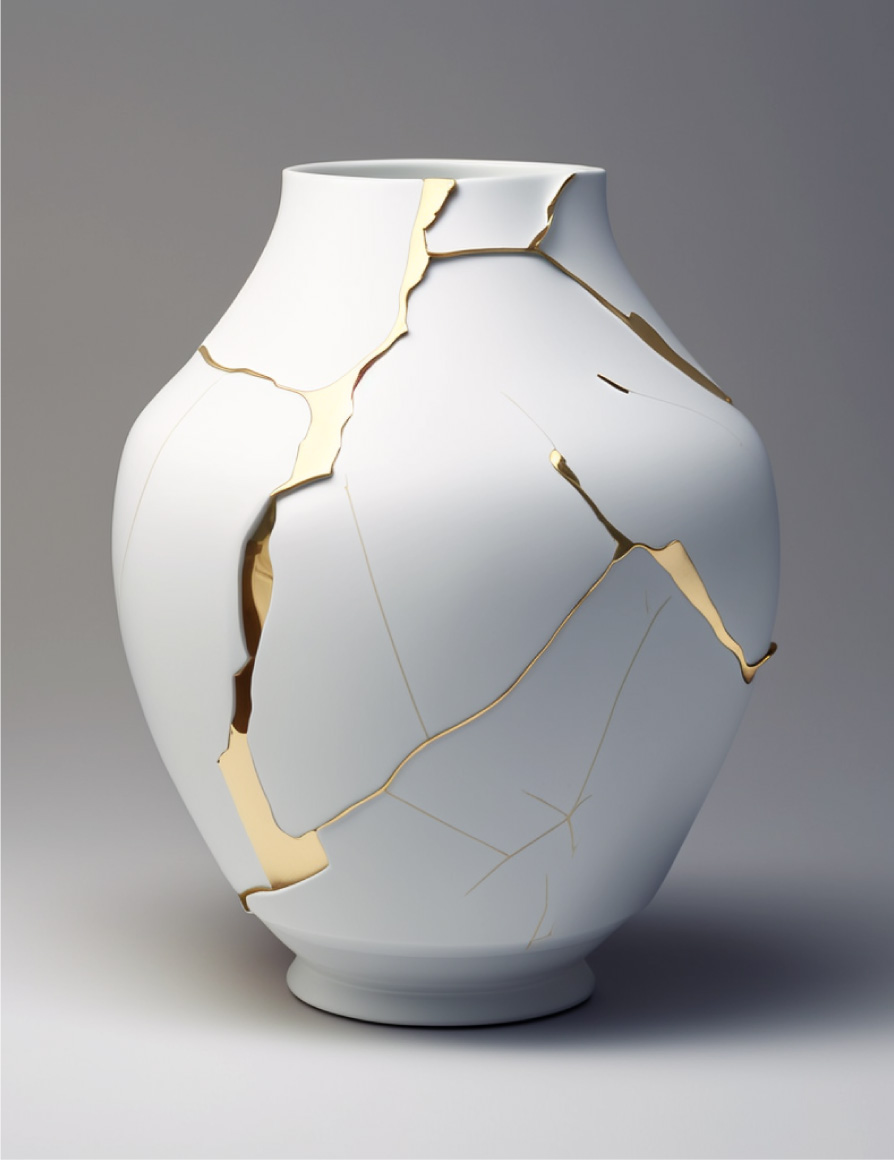
The art of golden repair is an ancient Japanese technique that celebrates the beauty of imperfection and resilience. This technique, known as kintsugi, involves collecting broken pieces of pottery and piecing them back together using a special lacquer infused with gold, silver, or platinum. The result is a stunning work of art that not only fixes the broken object but enhances its beauty and value, creating a unique piece that celebrates the beauty of imperfection and the power of resilience.

Philosophy
The art of golden repair. An ancient Japanese technique. The beauty of collecting broken pieces of pottery, piecing them back together, combining lacquer with gold, silver or platinum to form new bonds
Kintsugi has a long history in Japanese culture, dating back to the 15th century. It is a practice that embodies the spirit of wabi-sabi, which celebrates the beauty of things that are imperfect, impermanent, and incomplete. By embracing the imperfections and repairing broken objects with gold, kintsugi transforms them into something new and beautiful, with a unique story and character. It is a reminder that our imperfections and challenges can be transformed into something beautiful and valuable. In a world that often celebrates perfection and uniformity, kintsugi offers a different perspective, one that embraces diversity, resilience, and the beauty of imperfection.
Through the art of golden repair, we can learn to value and celebrate our own imperfections and those of others. We can see the beauty in brokenness and the potential for transformation and growth. Whether it is a broken object or a broken heart, kintsugi teaches us that there is beauty in the process of repair and that our scars and flaws can be transformed into something precious and valuable


Being Broken
It falls. It smashes. Broken.
Pieces shift from what they once were.
Fragments to be easily discarded. Shattered and jagged ends which lie now, in place of what was there before; a “perfect whole”.
These pieces of something – you can throw them away.
Or you can pick them up, hold them tenderly in the palm of your hand and forge anew.

“The wound is the place where the light enters you”
Rumi
“The world breaks everyone and afterward many are strong at the broken places.”
Ernest Hemingway
